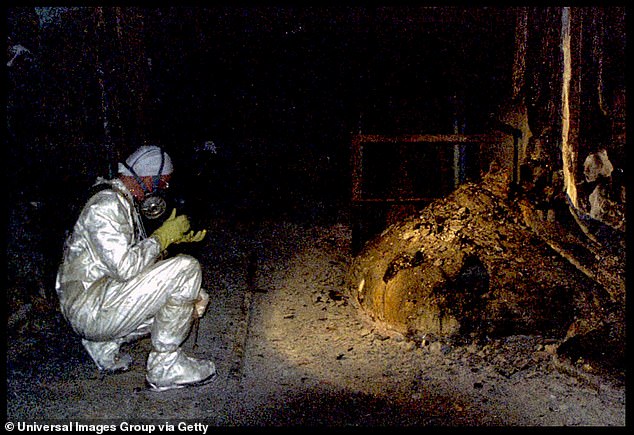It may sound supernatural, but there is a very real object so deadly that just looking at it could kill you.
Just 300 seconds in the room with the so-called ‘Elephant Foot’ will leave you only two days to live.
This deadly mystery is a 2m wide chunk of solidified lava formed from the molten core of the Chernobyl nuclear reactor.
Due to the intense radiation, only a few photographs have been taken of the elephant’s foot.
Even now, almost 40 years after the merger, entering the room with this object could be deadly and the threat could persist for centuries to come.
The elephant’s foot is one of the most dangerous objects on Earth. It is a solid mass of melted material from the core of the Chernobyl nuclear power plant in Ukraine.

In April 1986, the Chernobyl nuclear power plant in Ukraine experienced an unexpected heat surge during a routine test. The resulting meltdown was one of the worst nuclear disasters in human history.
On April 26, 1986, reactor number 4 at the Chernobyl nuclear power plant in Ukraine experienced an unexpected power surge.
When emergency shutdown procedures failed, temperatures in the core rose even further.
By the time the control rods that slow the reaction were inserted, it was too late and the intense temperatures cracked the rods.
Soon the cooling water vaporized, increasing the pressure until the reactor itself exploded in the worst nuclear disaster in human history.
That fall, as emergency crews struggled to contain the radiation, they discovered that a chamber beneath the reactor had become one of the most dangerous places on the planet.
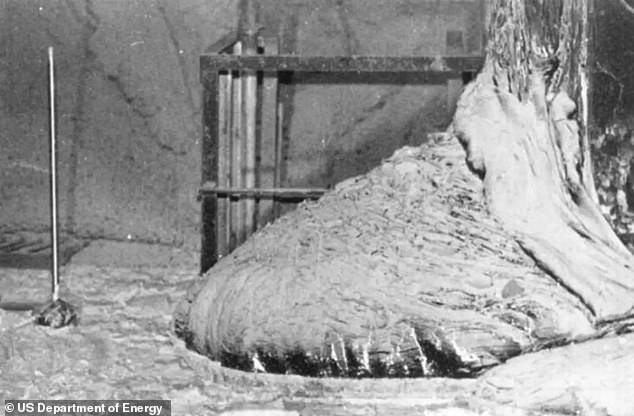
In this photograph, taken by the US Department of Energy a decade after the disaster, the elephant’s foot could still release a fatal dose of radiation within an hour.
The reactor became so hot that the steel and concrete used to protect the core melted and formed radioactive lava.
Despite what the initial cleanup crews believed, this material was not actually the reactor’s nuclear fuel.
When the core became critical, it simply melted the materials used to house it, which slowly fell through the reactor floor.
As it made its way through the pipes and concrete of Reactor 4, the material picked up more components, changing and transforming into a complex mixture of radioactive chemicals.
When this mixture of sand, concrete and nuclear fuel finally cooled, it solidified, forming a new material called corium.
A mass of corium, which fell into the steam corridor beneath the reactor, became known as an elephant’s foot because of its distinctive shape.
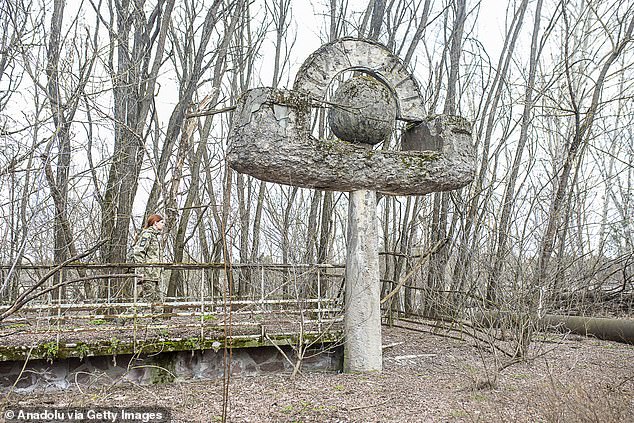
After the disaster, the area around the power plant was declared an Exclusion Zone. The intense radiation forced thousands of people to leave their homes, creating ghost towns.
In 1986, the elephant’s foot was emitting 10,000 roentgens (a measure of radiation) per hour, about 1,000 times the dose needed to cause cancer.
To put it in context, one hour of radiation at that level would be equivalent to having four and a half million chest x-rays.
In 30 seconds of exposure, after a week you would suffer dizziness and fatigue.
After two minutes in the room, your cells began to bleed and after four minutes vomiting, diarrhea and fever appeared.
Finally, after just five minutes, you would almost certainly die two days later.
When the cleanup team, called “liquidators,” arrived, they discovered that the elephant’s foot was still too radioactive to approach.
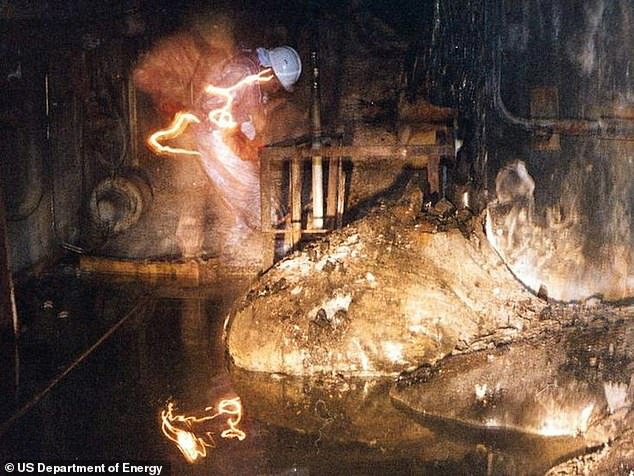
When the elephant’s foot formed, just five minutes in the room with it could cause fatal radiation poisoning. In this photograph taken 10 years later, the radiation is still so high that it has interfered with the camera film.
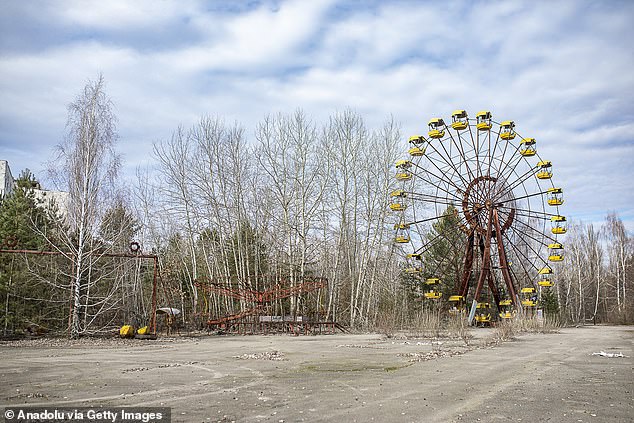
Radiation levels at Chernobyl (pictured) are gradually reducing, however the elephant’s foot may remain dangerous for decades more.
Using a hastily assembled camera on wheels, the team was able to take a photograph of the foot.
Ten years later, the US Department of Energy, which extensively documented Chernobyl, managed to obtain some photographs of the elephant’s foot.
In some of the Elephant’s Foot photographs you can see a man in an orange coat, believed to be Artur Korneyev, deputy director of Shelter Object.
Artur took this photo using a time delay camera to limit his exposure to radiation.
At this time, the corium droplet was emitting about one-tenth of the radiation it had originally emitted.
In fact, Artur survived the experience, making hundreds of trips to visit the disaster site and seeing more Elephant’s Paw than anyone else.
In 2021 he was still living in Ukraine according to a local newspaper, but it is not known if he is still alive.
However, even 500 seconds of exposure would cause mild radiation sickness, while one hour would be fatal.
Radiation levels near the elephant’s foot remained so high that they interfered with the film used to photograph it.
In 2016, a concrete and steel shelter called the New Safe Confinement was placed over the reactors to prevent further leaks.
This was reinforced with a steel structure to ensure that uranium dust would not disperse in the event of another explosion.
Because corium is so rare, having only occurred five times in history, no one is quite sure how the elephant’s foot will change over time.
Although nuclear material is slowly cooling, it is likely to remain dangerous for many years to come.


